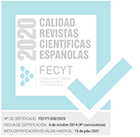Plantas usadas en la cosmética tradicional y la higiene en el Parque Natural de Arribes del Duero (occidente español).
Palabras clave:
recursos vegetales, higiene y cosmética, conocimiento tradicional, España.
Resumen
Se documenta y evalúa el conocimiento etnobotánico sobre plantas cosméticas y especies vegetales útiles en la higiene personal y doméstica en el territorio del Parque Natural de Arribes del Duero (Salamanca-Zamora, España). El trabajo de campo se ha llevado a cabo entre los años 2005 y 2009, mediante entrevistas semiestructuradas y observación directa de los participantes durante pequeñas salidas al campo en aquellas áreas de recolección de plantas silvestres, con 80 informantes (media de edad 72 años) en 18 localidades. Los informantes, en especial las mujeres de avanzada edad, poseen conocimiento de 32 plantas útiles, distribuidas en 18 familias botánicas, y de cómo manipularlas para obtener los productos deseados. Las especies usadas más frecuentemente son Thymus mastichina (L.) L. y Quercus ilex subsp. ballota (Desf.) Samp. La totalidad de las diferentes partes de las plantas son empleadas; no obstante, las ramas lo son con mayor frecuencia. Los usos tradicionales documentados tienen un gran valor ecológico, pues los productos obtenidos son menos perjudiciales para nuestra salud y el medio ambiente.Descargas
Los datos de descargas todavía no están disponibles.
Descarga artículo
Publicado
2012-10-22
Cómo citar
González J. A., García-Barriuso M., Ramírez-Rodríguez R., Bernardos S. y Amich F. (2012). Plantas usadas en la cosmética tradicional y la higiene en el Parque Natural de Arribes del Duero (occidente español). Lazaroa, 33, 9-18. https://doi.org/10.5209/rev_LAZA.2012.v33.40276
Número
Sección
Artículos
Licencia
LICENCIA DE USO: Los artículos a texto completo incluidos en el Portal de Revistas Científicas Complutenses son de acceso libre y propiedad de sus autores y/o editores. Por tanto, cualquier acto de reproducción, distribución, comunicación pública y/o transformación total o parcial requiere el consentimiento expreso y escrito de aquéllos. Cualquier enlace al texto completo de los artículos del Portal de Revistas Científicas Complutenses debe efectuarse a la URL oficial de la Universidad Complutense de Madrid.









